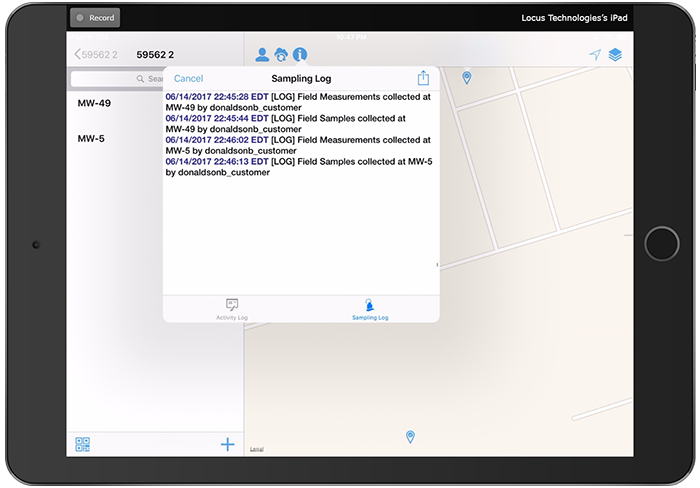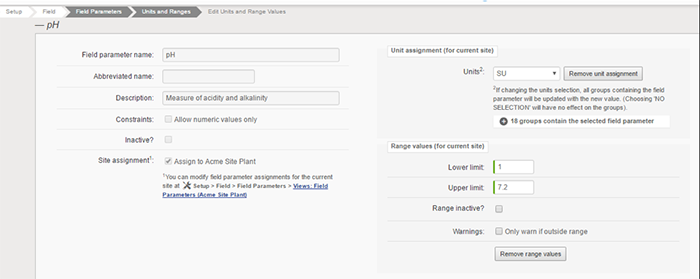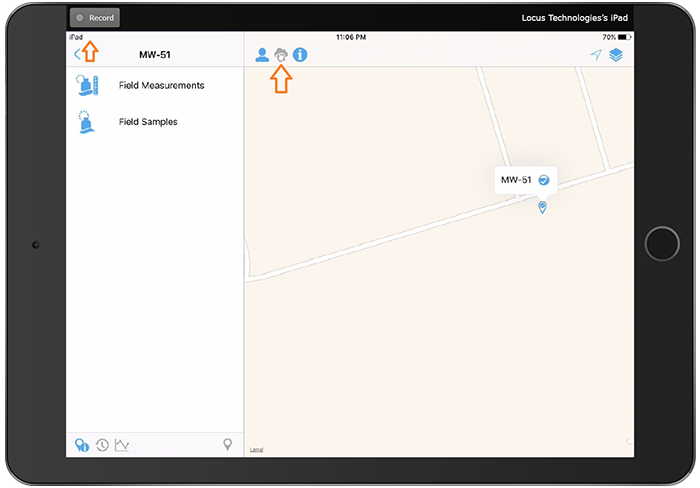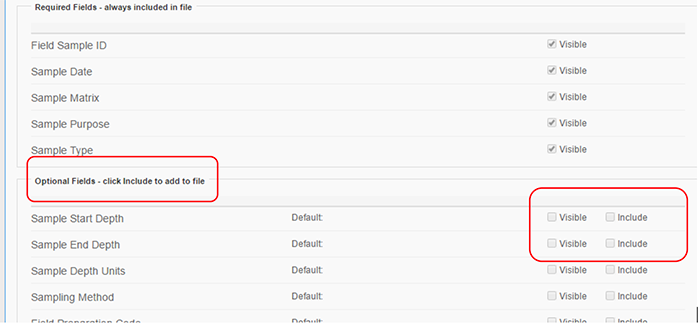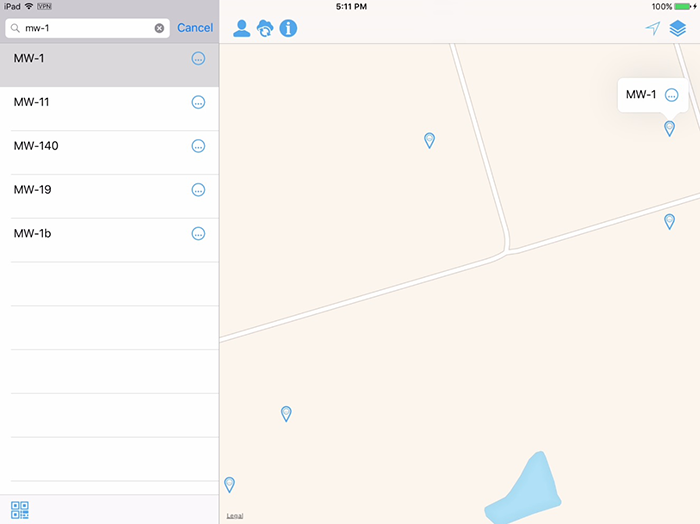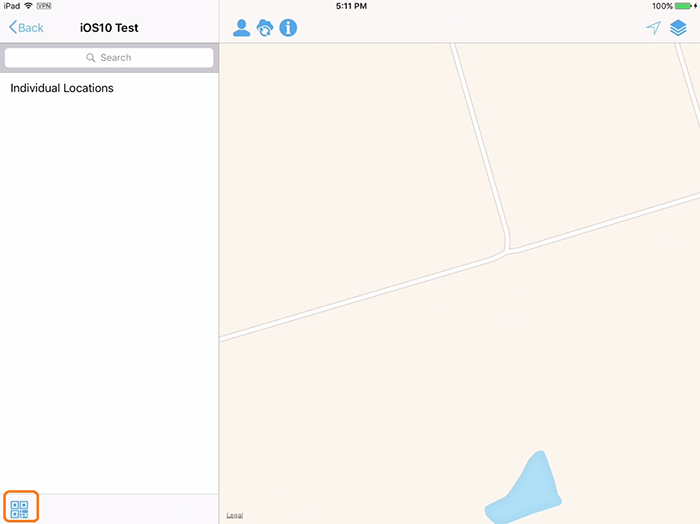Closed ‘consultant-centric’ model giving way to open ‘cloud’ computing
by Neno Duplan, CEO of Locus Technologies
Environmental consultants are cleaning up…literally.
As they go about the lengthy, tedious, expensive and very often dirty job of decontaminating polluted industrial sites, environmental consultants bill their clients by the hour, capturing…and then completely controlling…the superabundance of project-related environmental data that underlies remediation strategies.
As a result of this process, a “consultant-centric model” has dominated the field of corporate environmental data management. This is primarily because environmental data is not integral to the daily functioning of a company, and because the quantities and complexities of the data produced are enormous. So company managers are generally quite comfortable with letting their consultants do all the querying, analysis, reporting…and then storing the data.
And since the consultants derive increased billing hours from controlling their clients’ data, the ultimate incentive for them is a renewed or extended contract, an outcome which, though certainly not guaranteed, is optimized by their control of the data.
But change is coming. The environmental data management practices of corporations and their consultants are undergoing a profound transformation as new Web-based software provides a low-cost means of making available the critical information that organizational decision makers need not only to better understand and manage their overall environmental liabilities but also to improve their operations by analyzing the valuable data. While environmental data is collected primarily for compliance reporting, when mined with the right tools it can also be used to point to weaknesses in data gathering and processing operations and provide valuable information on how to eliminate or reduce these.
A new “company-centric” environmental data management model now offers a remote data repository situated in the Internet “Cloud” and equally accessible in real time to all, including both the client and its consultants.
Polluters Pay… and Pay Again
Business and industry pay well for the services of experienced, knowledgeable specialists who can help with the job of abating the damage done to a massively polluted environment. According to the EPA and some state agencies, there are more than two million contaminated sites in the U.S. alone. Among the major sources of widespread water pollution are the effluents and contaminants emitted by industry into the water bodies—lakes, rivers, reservoirs, aquifers—that are the source of all our drinking, cooking and bathing water.
In an effort to stem the tide of environmental deterioration — or at least compel the business world to be more diligent in implementing prevention and conservation efforts — thousands of U.S. state and federal regulations (in addition to numerous voluntary standards) require that organizations be in full legal compliance with mandates concerning environmental protection.
Public opinion is also heavily influencing environmental developments. In a March 2009 Gallup Environment survey, “pollution of drinking water” was listed as Americans’ No. 1 environmental concern, with 59 percent of those polled saying they worry “a great deal” about the issue. Fifty-two percent said they worried equally about “pollution of rivers, lakes and waters,” and “contamination of soil and water by toxic waste.” In comparison, 45 percent are worried about “air pollution,” while the “greenhouse effect” (or “global warming”) is of great concern to 34 percent of the survey’s respondents.
Polluting companies with environmental recovery obligations and a portfolio of contaminated sites are on official notice to get busy cleaning up the mess. However, since tracking environmental data, site cleanup and regulatory compliance are non-core activities for most corporations, doing the work themselves offers very little direct economic advantage, which makes the endeavor ideal for outsourcing to dedicated specialist third parties.
Consulting—Lucrative but Uncertain
Enter the environmental consultant, expert advisor to an incredibly lucrative market.
The Environmental Business Journal reports that the total U.S. environmental industry generated revenues of more than $300 billion in 2009. This dynamic market has given rise to a $30 billion consulting and remediation practice. ENR Magazine’s Top 200 Environmental Firms ranking, published each July, provides an annual look at this market.
Nearly 9,000 companies, ranging in size from one-person businesses to global corporations, provide environmental consulting services. Major companies include CH2M HILL, Parsons, AECOM, and URS as well as environmental engineering and consulting divisions of large engineering and construction firms such as Fluor and Bechtel. Contracts can run into the millions of dollars and extend for years.
But it’s a volatile business. A list of the leading company names from ten years ago would be very different from today’s list of top performers. If one thing is certain in the environmental industry, it is that clients switch consultants frequently. Sometimes they initiate the action. Other times, it is forced upon them when consultants change ownership via mergers and acquisitions, or simply go out of business.
Anyone who has been in the environmental consulting business for any length of time is most likely familiar with the names of those companies that have been relegated to history. Here are a few: Morrison-Knudsen, Smith Technology Corporation, Canonie Environmental Services, Woodward Clyde, Radian, Dames and Moore, OHM, AWD, Rust, Harding Lawson, and IT Corporation. At their peak, most of these companies made the ENR Top 100 list.
The changeability inherent with consulting companies presents clients concerned about their environmental liabilities with a problem. What if a now defunct company was tasked 10 years ago to build and maintain analytical data management software for a client with a portfolio of contaminated sites? In the upheavals caused by the business transactions involving these companies, the whereabouts and security of a client’s water or air quality data is apt to be one of the least concerns of the involved parties. Environmental Financial Consulting Group (EFCG) reported in October 2009 the staggering statistic that in the previous 12 years, 23 (58 percent) of the top 40 environmental consulting firms have gone bankrupt or disappeared, 17 (42 percent) have survived, 33 (84 percent) have undergone a major ownership change, and only 7 (18 percent) remain the same.
The volatility in the environmental consulting sector is not just limited to the businesses providing these services. On average, U.S. corporations lose half their customers in five years, half their employees in four, and half their investors in less than one.” (Frederick Reichheld, “The Loyalty Effect”). Given these statistics, does any company have any other choice but to take full ownership of its own water, air and other environmental data?
Such instability is another reason why the “consultant-centric” environmental data management model is so appealing to consultants and, despite the availability of alternatives, has endured so long—it works for them.
It also works for corporate environmental managers (if not the company bottom line). Since corporate environmental departments really don’t help a company make a product or a profit, these departments are often perceived by top management as cost centers…and even potential liabilities. As a result, they have historically been severely underfunded and understaffed. Department understaffing results in co-dependent relationships between in-house managers and their hired consultants, who end up functioning as the environmental department manager’s “de facto staff,” performing the job assignments normally carried out by regular employees.
Diversity the Key
The designation “environmental consultant” is a general term for a heterogeneous group of professionals with significantly diverse skill sets and experience. Earth’s natural environment is such a vast, ultra-complex ecosystem that remediation teams must of necessity possess an extensive array of knowledge, talents and multidisciplinary capabilities.
This is apparent in the delivery of services like contaminated site remediation, in which consultants investigate and clean up toxic substance releases like petroleum spills or dumped hazardous materials. Consultants perform preliminary site endangerment assessments and forensic evaluations, conduct soil and subsurface groundwater investigations, and prepare and carry out cleanup and long-term monitoring (so-called “long term stewardship”). Typical consultant tasks include capturing and logging in samples, uploading data from labs and field, performing analyses, and producing maps and compliance reports, and supervising long-term archiving of data and information.
The multi-disciplinary field of environmental consulting attracts a wide range of practitioners such as engineers, geologists, geophysicists, hydrologists, environmental studies PhDs, biologists, atmospheric scientists, climatologists, meteorologists and many more with a variety of technical, governmental, commercial, industrial and academic backgrounds.
And because of the significant information technology (IT) demands associated with contaminated site cleanup activities, the business of environmental consulting also involves highly trained IT managers, software developers, computer technicians, network and systems administrators, and more.
Corporate Environmental IT
Some outside consulting firms that provide environmental data storage infrastructure utilize commercial, client-server database management systems. Others have in-house designed databases, generally built on top of the Microsoft Access relational database management system. Surprisingly, though, the most common tool used to store and report data is the ubiquitous Microsoft Excel spreadsheet.
But that humble application is rapidly giving ground to an emerging “green” software market with hundreds of tools for jobs like managing greenhouse gas (GHG) emissions and industrial pollution, air and water consumption, paper waste, energy conservation and regulatory compliance requirements.
The multi-billion dollar environmental software market encompasses numerous sub-segments with applications for air and climate, energy and renewables, health and safety, monitoring and testing, soil and groundwater, waste and recycling, water and wastewater, and environmental management. This last segment includes software for categories like investigations and assessments, auditing, compliance, ecology, EHS, environmental finance, management systems, modeling, permitting, planning, reporting, risk, science, sustainability and green building.
The traditional “consultant-centric” approach to environmental site cleanup is changing under pressure from clients and within the industry itself to adapt consulting practices to the new “company centric” information processing realities of the Internet age, e.g., Software-as-a-Service (SaaS) and “Cloud” Computing. In summary we are witnessing the early stage of the transformation from a highly distributed, unconnected, multiple platform silo systems to the centralized, single platform web-based Enterprise Environmental Resource Planning (EERP) systems .
SaaS via Cloud Computing
In the SaaS delivery model, the software vendor provides access to its software and functions remotely as a Web-based service. SaaS allows organizations to access business functionality at a cost typically less than paying for licensed applications, since SaaS pricing is based on a monthly rental fee. Instead of users buying software and paying for periodic upgrades, their use of a SaaS application is subscription based and all upgrades are provided during the term of the subscription. When the subscription period expires, all a client needs to do is to renew.
This on-demand service provides measurable economies of scale and cost advantages because the more customers a SaaS vendor has, the less each customer pays for a subscription. This process continuously drives down costs while improving software quality as a SaaS application benefits from the “wisdom of the crowd,” i.e., its many users. When a large “network effect” is present, as is the case with SaaS-based software, the value of a product or service increases as more people use it. This effect, which originally described the rapid spread of telephones, and that has manifested itself more recently in the rapid adoption of social networking sites such as Facebook and LinkedIN, states that the value of a communications network to its users rises exponentially with the number of people connected to it.
SaaS applications are maintained in the service provider’s datacenter, and every time users launch their browsers and log on, they get the latest version of the software as well as access to the most current data, which is also stored in the service provider’s datacenter. Because the software is hosted remotely, users don’t need to invest in additional hardware or software. SaaS removes the need for organizations to handle installation, set-up and often daily upkeep and maintenance.
SaaS environmental applications are remotely hosted by service providers like Locus Technologies and made available to customers via the Internet—the “Cloud.”
“Cloud Computing,” a name inspired by the cloud symbol that’s often used to represent the Internet in flow charts and diagrams, is a general term for anything that involves delivering hosted services on the Internet. Cloud Computing describes all data processing activity that occurs “outside the firewall” of security measures that protect an organization’s networked computer systems. The Cloud provides the computing capacity required to run SaaS and other types of applications. Since SaaS is a subservice of Cloud Computing, all SaaS applications are in the Cloud, which provides the computing power to run those applications.
In environmental information management, Cloud Computing puts companies back in charge of their own data while at the same time offering individuals with the appropriate logon privileges unfettered access not only to relevant data, but also to tools needed to analyze these data. If one can find information on something he or she is looking for on the Web in seconds and for free, why should one have to pay a consultant to dig into their own data to give them information they already own?
By storing their clients’ data on their own servers or otherwise monopolizing that data, consultants erect a substantial barrier to any improvement in a situation that has amounted to client management’s willing relinquishment of control over a critical asset and resource the company actually owns. When senior management generally lacks familiarity with (and even interest in) their own environmental data, a company often has a poorly connected relationship with that data. This can result in having to pay consultants to mine the company’s own environmental data to find information that the company already possesses and should be able to readily access. Cloud Computing circumvents this artificial barrier.
Companies that pay a price for polluting also pay an additional price for turning over control of their environmental data. This comes in many forms, including:
- Increased expenditures
- Greater data inconsistency and variability
- More frequent QA/QC issues
- No access to performance metrics
- Fewer opportunities to reduce sampling
- Poorer security and backup, and duplicative efforts across consultants.
- Less opportunity to improve their operational processes that could ultimately be optimized to prevent a need for environmental data collection and reporting in the first place.
Consultants provide valuable advice and service in their particular areas of expertise, and the best consultants utilize the best tools available to meet their obligations to their clients. Savvy environmental consultants and their clients clearly recognize the mutual benefits to be derived from adapting to the new realities of “company centric” environmental data management in the “Cloud.”
Locus Technologies (www.locustec.com), Mountain View, Calif., is the industry leader in Cloud Computing environmental solutions serving mid-market and Fortune 500 corporations in numerous industrial segments, including technology, manufacturing and energy production (e.g., Alstom, Chevron, ExxonMobil).
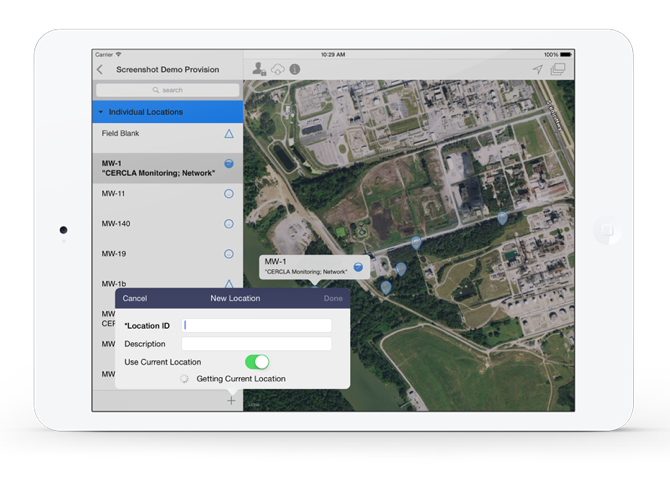
![]() symbol associated with it (a
symbol associated with it (a ![]() symbol if coordinates are known). When a location with a triangle is selected, the user is prompted with the option to ‘Set Location’ – capture the current coordinates (Lat/Long) of where the user is located. When the provision file is loaded to EIM, the data manager will have the option to update the location in EIM with these coordinates. The accuracy of these mobile captured coordinates are below survey grade, but can be updated another time.
symbol if coordinates are known). When a location with a triangle is selected, the user is prompted with the option to ‘Set Location’ – capture the current coordinates (Lat/Long) of where the user is located. When the provision file is loaded to EIM, the data manager will have the option to update the location in EIM with these coordinates. The accuracy of these mobile captured coordinates are below survey grade, but can be updated another time.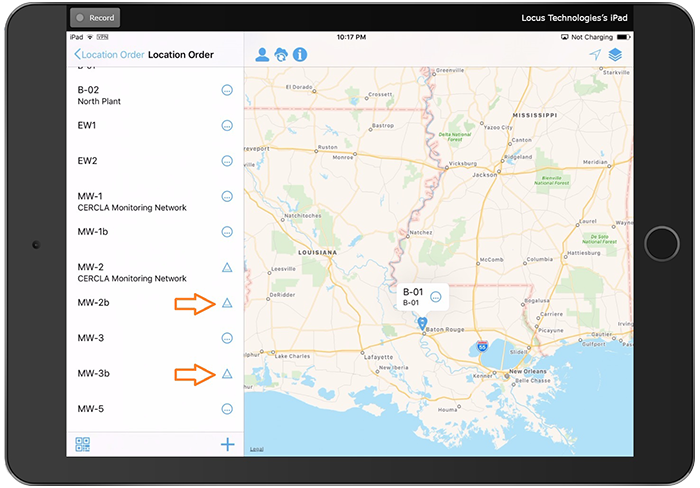
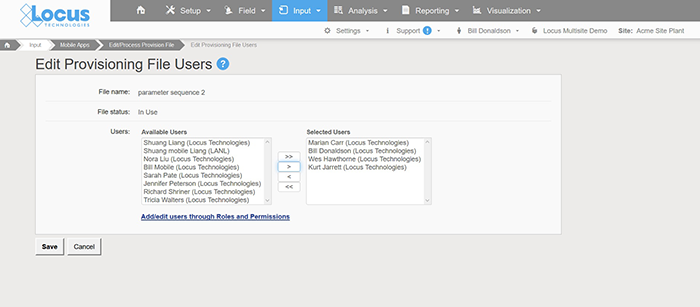
![]()
![]() icon to see a log of the collected samples for the day.
icon to see a log of the collected samples for the day.